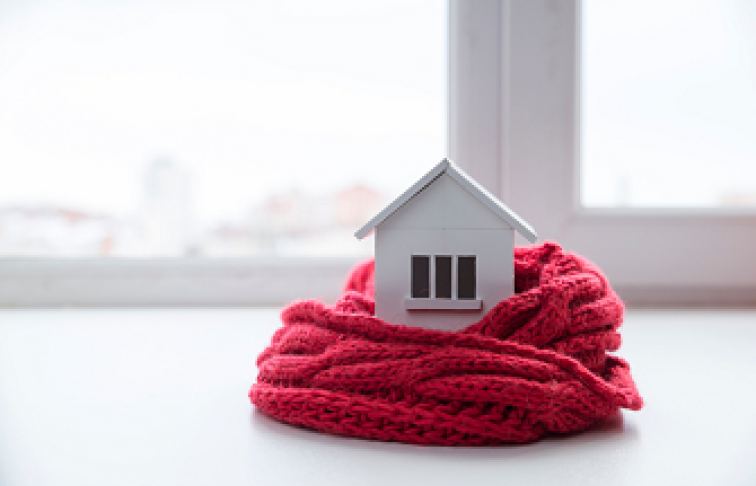Manage your account and see your money through our mobile banking app or on your computer through our website.


Several factors are driving the high cost of energy. The pandemic increased demand and because gas, which we also use to make about 40% of our electricity, was in short supply, prices rose. They were driven even higher when Russia – Europe’s largest supplier of gas – invaded Ukraine. In normal times, nearly one third of Russian gas flows through Ukraine’s gas pipelines to Europe and until alternative gas supplies are secured, costs will remain high.
While we can’t control international politics or the weather, there are steps we can take to reduce the amount we need to spend on heating our homes and make the energy we pay for go further.
1. Control your heating. Every home has heating controls, be it timers, thermostats or plumbing and electronic components, basically anything which help you manage when the heating should be on and what temperature your rooms should be. They can be set manually or internet-connected controls that learn your habits and adjust settings automatically. With so much diversity, it’s little wonder that research by Energy Saving Trust revealed that few people really understand their controls and so don’t use them. But heating controls make your heating system easier to operate and more efficient, which will save you money. At the least your home should have a time control on the central heating, at least one room thermostat and, thermostatic radiator valves (TRVs) if you have radiators. To find out how these work, check the manufacturers’ handbook, which can often be found online. The Energy Saving Trust also list some common functions on their website, which is also a good place to start if you are considering adding more controls to your system (you don’t have to replace your boiler to add more controls):
2. Set your boiler to the best temperature The first step to saving money is to make sure that you’re not paying for more heat than you need. The exact temperature setting for a combi boiler is not set in stone, though there are some generally accepted guidelines for efficient operation and heating performance. For a modern combi boiler, the radiator heating temperature should be set for a flow temperature of between 60 and 70°C, with the hot water temperature set at around 50°C
3. Set your heating to switch on – and turn off Do you know how long it takes to heat your home? Approximately 30 minutes – so you can set your heating to come on 30 minutes before you need it. Ideally, set your thermostat to the lowest comfortable temperature, which for most people falls between 18- 21 degrees. The energy saving trust advises that turning down your heating by 1 or 2 degrees could reduce your energy bill by 10%. Setting your heating to come on also avoids the temptation to come in to a cold house and then put the thermostat to a higher temperature because you think it will heat your home more quickly; it won’t. Similarly, set your heating to go off 30 minutes before you need to, as you will then still get the benefit of the heat as the system cools down.
4. Bleed your radiators. If you have a cold spot on your radiator, this is caused by trapped air that you can easily remove. The process is called bleeding your radiator and you can find your radiators’ bleed valve at the top of the radiator at either end. It's round and has a square section in the middle with two notches. The only equipment you’ll need is a radiator bleed key (available from DIY shops), an old towel and a bowl to collect the water in. When your radiators are cool, put your towel under the pipes and your bowl under the bleed valve. Open the valve slowly with your bleed tool, a quarter turn at a time. The air will hiss as it escapes. When that sound stops (or when water starts to come out of the radiator) close the valve. Check the pressure of your heating system afterwards to make sure that the pressure gauge on a pipe close to the boiler is in the ‘green’. If it’s too low, you can increase it using the filling valve tap connected to your boiler. If you’re unsure, there will be instructions in your boiler’s manual.
5. Draft proof your home. Draught-proofing is one of the cheapest and most effective ways to save energy – and money – in any type of building. If you can feel cold air coming in, the air you’re paying to heat is getting out the same way. Making sure you have the correct level of loft insulation is the best place to start (270mm) but heat can also be escaping throughout your house – through floorboards, unlagged pipes, letterboxes, cracks in your walls, under your doors, around your windows and through chimneys. You can get tips on how to insulate different parts of your home on the energy saving trust website. Just make sure that you don’t block or seal any intentional ventilation, which your home needs to stay fresh and dry. This includes extractor fans, underfloor grilles or airbricks, wall vents and trickle vents (modern windows have small vents above them to let fresh air trickle in).
6. Turn off the radiators – and shut the door – on rooms you aren’t using. Ask yourself if you really need to heat every room in your home or if some rooms can be left cold. Don’t only consider the rooms that you are not using (such as a spare room) but also ones you tend to use infrequently (such as a utility room or downstairs loo). Just remember that if rooms are left cold you’re going to need to keep the door closed and use draught excluders to stop cold air escaping into the rest of your home.
7. Use supplementary heat sources. If you only need to localised heat for a short period of time, you might want to consider alternative supplementary heating. For example, you can warm your bed at night with an electric blanket or hot water bottle, rather than heating the whole room. Or if you need to work from home for a few hours and the rest of the house is empty, you could wrap up with a hot water bottle and use a portable heater. Remember though, this is just an option if you need heat for a short period of time; if you need heat for a longer period, or more than one room in the house, your gas central heating is likely to be more cost effective than electric heaters.
8. Use your curtains. If you have a sunny rooms, open the curtains during the day to make the most of the free warmth from the sun. Close them about an hour before the sun goes down to keep out chills. In rooms you’re not using, keep curtains closed, so they don't become cold spots. If your curtains aren’t lined, consider adding a thermal lining; there are plenty of options available to suit your preference, from those you need to sew on to iron-on products.
9. Clear everything away from your radiators. We are a nation that likes to hide its radiators. We put covers over them or furniture and curtains in front of them, but by blocking them in this way, we are making our heating system less effective. Remove covers, tuck curtains on windowsills and rearrange your room to make sure that there is 15-30cm between any furniture and your radiator so that the warm air can flow through the room. Just don’t push furniture against a wall as this blocks air flow and can lead to mould.
10. Only pay for what you use. Make sure that your energy bills are based on your actual energy use, rather than an estimate. If you have a smart meter, this will send a meter reading to your supplier at least once a month, so you need to do nothing. If not, make sure that you submit regular meter readings to your supplier.